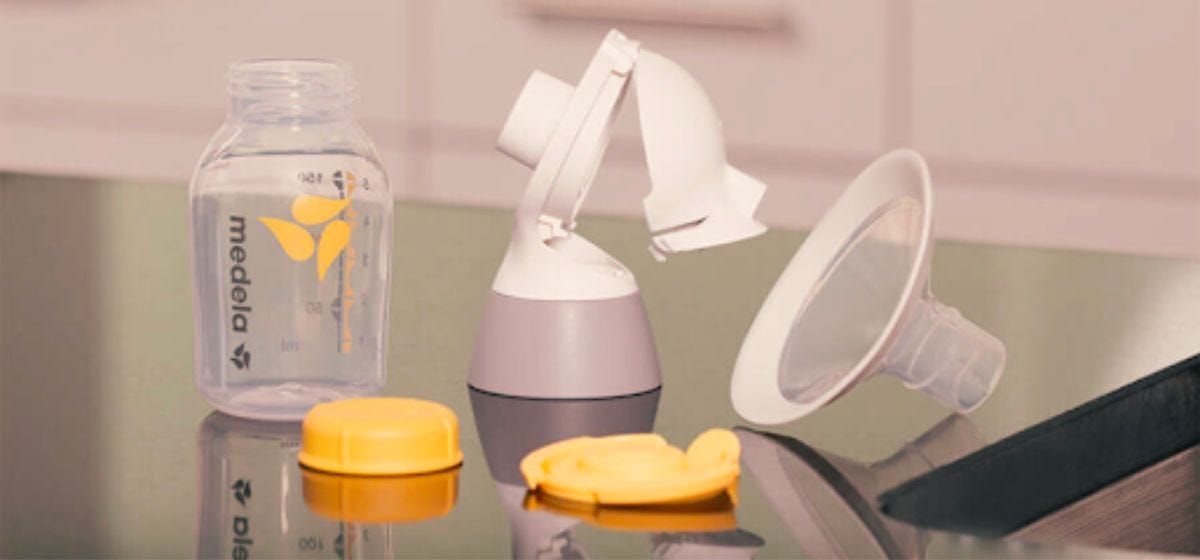The first few days after giving birth are exploding with joy, wonder, and a host of new experiences for both mother and baby. While those first few days after birth are undoubtedly filled with precious moments, you might find yourself in the midst of something called cluster feeding. It's a natural behavior that can initially take some mothers by surprise, considering how much the baby wants to breastfeed!
Don't worry, mama—it's an entirely normal part of the breastfeeding journey. In this comprehensive guide, we will explore what cluster feeding is, why your baby does it, how to manage it, and much more.
IN THIS ARTICLE:
How Long Does Cluster Feeding Last?
How Often Will My Baby Cluster Feed? Is This Normal?
Newborn Cluster Feeding: Why Do Babies Cluster Feed?
What Are the Signs Your Baby is Cluster Feeding?
How Do I Manage the Cluster Feeding Marathon?
How Does Cluster Feeding Impact My Breast Milk Supply?
What Warning Signs Do I Watch For?
Self-Care for Cluster Feeding Mamas
What is Cluster Feeding?
Imagine this: it's evening, you're settling down, and suddenly, your baby seems like they've got a VIP pass to an all-you-can-eat milk buffet. That's cluster feeding for you! It's when your little one decides to nurse more often and for longer stretches, especially during specific times of the day. Although every baby is unique, a common time of the day for cluster feeding is in the evenings. This behavior is entirely normal and is not a sign of insufficient milk supply or any breastfeeding-related issues.
How Long Does Cluster Feeding Last?
Just like your baby's growth spurts, cluster feeding is a phase that doesn't last forever. Typically, cluster feeding is most intense during the first few weeks of life and can continue on and off for several months. Many babies outgrow this behavior around 3-4 months old, but some may continue cluster feeding for longer. Remember, every baby is unique! Some may cluster feed for a few days during growth spurts, while others might do it for weeks at a time.
The good news? After 6 months, cluster feeding generally decreases as babies start eating solid foods. So, hang in there, mama—this too shall pass, and you're doing an amazing job nourishing your little one!
How Often Will My Baby Cluster Feed? Is This Normal?
The frequency and duration of cluster feeding sessions vary, but again, it's common for babies to cluster feed in the evening and also when they’re going through a growth spurt. These nursing sessions can last for several hours, providing essential nourishment and comfort for your baby. This can also be a common time for a mother to worry about inadequate milk supply. Take a deep breath—this phase doesn't last forever and even serves a few purposes.
Newborn Cluster Feeding: Why Do Babies Cluster Feed?
All that breastfeeding you’re doing is helping your newborn baby grow big and strong! Growth spurts are one reason a baby will have a period of cluster feeding. This important time supports a baby's rapid growth during specific developmental milestones. Although individual variations exist, growth spurts typically occur when your baby is around:
- Seven to 10 days old
- Two to three weeks old
- Six weeks old
- Then periodically throughout the rest of the first year of life
Another reason a baby cluster feeds is to stimulate a mother’s milk supply. That’s why another common time for cluster feeding is on the second and third days of life when the baby is putting in their order for your milk supply to increase. Frequent nursing signals the body to produce more milk, ensuring the baby's growing needs are met. It's like a boot camp for your milk production, ensuring that your breast milk supply meets your baby's increasing demands.
What Are the Signs Your Baby is Cluster Feeding?
If you’re wondering what the signs of cluster feeding look like, this section is for you. Breastfed newborns eat at least 10 to 12 times in 24 hours. If your baby wants to breastfeed more often than what’s typical, it may indicate cluster feeding. That’s why following your baby’s hunger cues is encouraged. Because every baby is unique, you never know when your baby might start cluster feeding! Feeding cues include:
- Restless behavior
- Smacking lips
- Sticking tongue out
- Putting fists and fingers in mouth
- Rooting behavior like turning towards your breast
- Crying is a late feeding cue
So forget the clock and feed your baby whenever you see any of these tell-tale signs! It's an intense dance between you and your little one, and they're leading.
How Do I Manage the Cluster Feeding Marathon?
All this frequent feeding can wear a mama out, so take those breaks when your sweet baby gives them to you! It's normal for your baby to go longer periods of time between feeding sessions after a cluster feeding marathon. Use this time wisely – go to bed in the evening after your little one settles down (you might get a nice long stretch of sleep once baby is done snacking) or treat yourself to a bit of self-care. Eating a well-balanced diet and drinking plenty of water will help you not only feel good and give you stamina but also help optimally maintain your breast milk supply. Taking care of yourself when you can will help you feel more prepared for the next cluster feeding session!
How Does Cluster Feeding Impact My Breast Milk Supply?
Although cluster feeding can sometimes be a challenging time for many moms, it's like a secret handshake between your baby and your mammary glands, telling them to ramp up breast milk production! When you let this important process play out uninterrupted (without a pacifier, for example), you ensure that your baby’s increased nursing is positively impacting your breast milk supply, increasing it perfectly to your baby’s needs.
What Warning Signs Do I Watch For?
If your baby seems to be constantly seeking food, seek professional advice. Don't hesitate to contact a certified pregnancy and breastfeeding consultant (IBCLC) or your pediatrician. Double-checking that your baby is gaining weight normally is important and easy. Seek professional help if you observe signs like inadequate weight gain, fewer wet diapers, or persistent fussiness. Keeping a diaper diary can be a great way for parents at home to know their baby is eating well. After all, what goes in must come out! Watch for a minimum of six wet diapers every 24-hour period.
Self-Care for Cluster Feeding Mamas
Cluster feeding can be an intense experience, both physically and emotionally. That's why self-care is crucial during this time. Here are some ways to take care of yourself while nurturing your little one:
- Nipple Care: Frequent nursing can lead to sore or cracked nipples. Products like Willow Nipple Balm can provide fast-acting relief with its ultra-moisturizing formula. For moms seeking a single-ingredient option, Lansinoh Lanolin Nipple Cream is another top choice. Both options soothe and protect your nipples, supporting a more comfortable breastfeeding experience.
- Stay Dry and Comfortable: If you find you’re leaking breast milk around your baby’s cluster feeding phase, products like Evenflow Advanced Nursing Pads offer optimal absorbency and extra soft material for sensitive skin. Plus, these individually wrapped pads are perfect for on-the-go convenience.
- Nourish Your Body: Remember, breastfeeding requires extra calories and nutrients! Boobie Bar Superfood Breastfeeding Bars are a delicious way to support your milk supply. Packed with organic superfoods, these bars can help boost your breast milk production while satisfying your hunger.
- Hydrate: Keep a large water bottle nearby during cluster feeding sessions. Staying hydrated is crucial for milk production and your overall well-being.
- Rest When You Can: Take advantage of the breaks between cluster feeding sessions to rest or nap. Your body is working hard—give it the rest it deserves!
- Ask for Help: Don't hesitate to ask your partner, family, or friends for support. Whether it's bringing you snacks, helping with household chores, or just providing company, every bit of help counts. We also encourage you to talk with our breastfeeding experts and to participate in our pregnancy and breastfeeding classes!
Remember, taking care of yourself is not selfish—it's necessary. A well-cared-for mama means a happy, well-fed baby. You've got this!
Can I Use a Pacifier During Cluster Feeding?
While using a pacifier during cluster feeding may be tempting, it's best to hold off. Your baby is cluster feeding for an important reason—to get your milk flowing and to satisfy their growing appetite. Introducing a pacifier might interfere with that beautiful breastfeeding rhythm you've got going on. Remember, you're in a dance with your baby, and suckle time should be at the breast, especially in the first several weeks of breastfeeding when your breast milk supply is still becoming established.
Understanding and navigating cluster feeding throughout your baby’s first year is essential for a positive breastfeeding experience. By recognizing normal patterns, prioritizing self-care, and seeking professional help when needed, you can confidently navigate this natural phase of your baby’s amazing growth.
Remember, each baby is unique, and the breastfeeding journey is a shared learning experience for both parent and child. Trust your instincts and your baby's cues – they're the best indicators of what they need. Cluster feeding is a temporary phase, a normal part of the breastfeeding journey, and a testament to the incredible bond you're building with your sweet baby!
What If I Have Questions?
If you are interested in learning more about cluster feeding, you can schedule a one-on-one appointment with an Aeroflow pregnancy and breastfeeding consultant here.
References
- https://lllusa.org/helping-to-get-breastfeeding-off-to-a-good-start-frequent-access/
- https://www.ncbi.nlm.nih.gov/pmc/articles/PMC4776771/
- https://www.healthychildren.org/English/ages-stages/baby/feeding-nutrition/Pages/how-often-and-how-much-should-your-baby-eat.aspx
- https://www.mayoclinic.org/healthy-lifestyle/infant-and-toddler-health/in-depth/healthy-baby/art-20047741
- https://wicbreastfeeding.fns.usda.gov/cluster-feeding-and-growth-spurts









